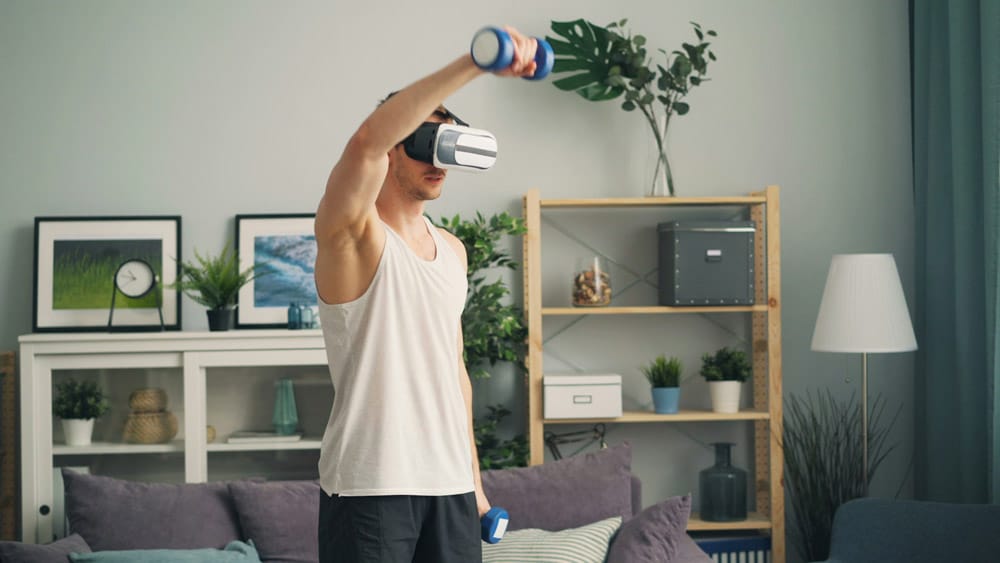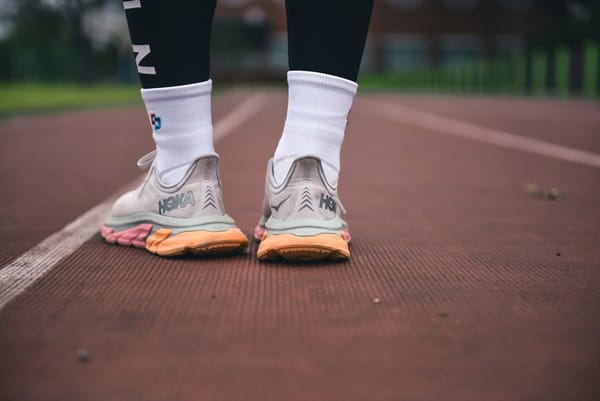How VR and Gaming Are Changing the Way We Exercise

Fitness and video game worlds remained separate not too long ago. Suddenly, the worlds of video gaming and fitness have started combining in imaginative and powerful ways. Virtual reality alongside gaming progressions have transformed workouts beyond traditional gym visits and repetitive exercise programs. The VR headset plucks you out of reality to box in blazing futuristic arenas, command neon dance stages, or reach zen through virtual mountaintop meditation, all while receiving effective exercise benefits.
What Is VR Fitness?
Virtual reality (VR) fitness along with exergaming revolutionizes human exercise processing. Fitness buffs seeking something new alongside motivational benefits discover through this technology that it delivers immersive, effective programming. The virtual reality technology rearranges workout environments in innovative ways that should interest anyone considering it for personal exercise regimens.
VR fitness consists of exercise practiced inside computer-generated surroundings which use virtual reality headsets and handheld controllers. Motion controls your game avatar while your real-life actions such as arm swings and squats duplicate your physical movements inside the game world. The process activates full-body exercise which raises heart rate and activates your muscles without creating a traditional workout experience.
Gaming experiences which combine audience participation with physical action belong to the exergaming category. Although motion-based console games pioneered this concept through Wii Fit introduction, VR expands these principles with its fully immersive three-dimensional environments plus instantaneous feedback. Your movement adopts meaningful directionality while taking place within a computerized universe.
Fitness enthusiasts gravitate towards VR because of its distinctive ability to change traditional workouts through engaging experiences. The practice of working out conventionally depends mostly on dedication along with planned routines and repetitive motions. Unlike standard workouts, VR-paced training sessions appear more like interactive video games. VR workout actions like your lunges, punches, and dodges perform because the game insists on them. Workplace behavior shifts psychologically when you both change exercise into behavior that feels desirable instead of obligatory.
Obliteration of workout awareness stands out as one of VR's most useful benefits for fitness enthusiasts. People with limited motivation find great support through this technology. VR replaces treadmill boredom by enabling users to chase high scores during missions while they beat previous best performances, simultaneously sweating off calories and building total-body stamina.
The immersive qualities of VR help your mindfulness stay steady throughout exercise sessions. Visual and auditory environments surround you with compelling experiences which help you avoid developing fatigue. VR technology promotes longer exercise sessions along with sustained enjoyment and prolonged commitment to your established fitness practice.
VR Fitness Experiences Popular in the Market
Through their distinctive fitness methods, several virtual reality platforms have become popular.
- Beat Saber stands as a popular VR music-based game because players wield virtual sabers to the rhythm of music while attacking incoming blocks. The game's fast tempo delivers intense calorie-burning action. This is not only a game people use as a standard cardio workout but also an intense music-based activity.
- Supernatural combines streaming expert trainers with artistically curated music and magnificent digital worlds for its monthly subscribers. The platform provides daily exercise sessions ranging from flow-based movement exercises through boxing sequence routines. The system presents itself as basic personal training that integrates breathtaking virtual outdoor and mountain scenery.
- FitXR delivers an interactive fitness group class direct to your living quarters. FitXR presents diverse training options through its boxing and dance programs alongside its high-intensity workout routines. FitXR users view other participant avatars, which creates a virtual social environment similar to the excitement found in a physical gym studio.
- Les Mills Bodycombat VR includes martial arts-based exercises through virtual instructor demonstrations. The sessions fuse musical movements with energetic but easily replicated workout sequences.
Genuine Physical Advantages
VR fitness creates real-world outcomes through what appears to be gaming activities. The average VR exercise session provides calorie-burning rates matching tennis and brisk aerobic workouts, according to current research. Through popular health guidelines, VR workouts reach vigorous-intensity cardio status when users practice for twenty minutes in Supernatural or FitXR applications.
Most VR fitness programs provide more than cardiovascular benefits since they help strengthen your coordination skills together with improving your balance and increasing your muscular endurance capabilities. Repeated movement of squats alongside punches and lunges activates core muscles as well as leg muscles. Games that require upper-body control over time help people boost muscular strength in their arms and shoulders. Although serious muscle mass requires resistance training, these exercise sessions excel at toning muscles and enhancing movement skills and conditioning.
Exercise adherence depends on consistency rates. The fun factor of VR workouts leads people to maintain their workouts over time. Improved outcomes result from consistent exercise, whether your health objectives involve losing weight, improving heart health, or simply increasing daily physical activity.
Both Mental and Emotional Fitness Benefits
The mental positivity experienced through VR fitness holds the same importance as the physical results. Most users notice greater relaxation and elevated mood levels after VR fitness sessions. The environment's immersive aspects combat stress while interactive, consumer-friendly gameplay elements maintain user concentration. VR exercises showed superior effects to traditional methods in enhancing mood and diminishing anxiety in several studies.
Users achieve a feeling of success when using the system. Games provide multiple achievements through challenges and milestones alongside feedback options that acknowledge player progress. Building exercise confidence becomes easier through this method because people develop better fitness relationships since it creates welcoming spaces to counter traditional gym anxieties.
Self-conscious individuals can move unrestricted within VR's enclosed private environment. A judgment-free virtual environment lets people attempt different moves and push themselves confidently to the limit without worrying about peer evaluation.
The entry barrier remains a core consideration for accessibility in VR applications along with hardware and device requirements. Athletes must use VR headsets such as Meta Quest or PlayStation VR to start the fitness experience. The startup cost for headsets stays near the multiple hundred-dollar range, while most fitness software includes subscription costs. Punching, ducking, and sidestepping need an open area that measures multiple feet from each side to ensure safety.
Once set up, the convenience is unmatched. The flexibility of fitness programs eliminates the need to schedule around gym hours or machine availability as well as avoid traffic to the gym. Fitness sessions become accessible at any time of your schedule from morning hours throughout the day and into the night. People with tight schedules and home working conditions benefit tremendously from this flexible scheduling system.
As appealing as virtual reality exercise programs appear, they contain certain limitations. Initial VR exercises create motion sickness symptoms for a number of users, but these symptoms typically disappear over time. Fitness practitioners should establish safe areas for exercise and obey fundamental safety rules while they avoid hitting furniture or running themselves into exhaustion.
Cardio lifts and light weight training dominate the workout instruction in these sessions. Bodybuilders and strength-focused athletes should use VR exercises as an addition to their traditional weight-training programs instead of a full VR exercise replacement.
VR presents a learning curve for relocating to this new method of exercise. Adjustment to the technology involves about the same time as learning to operate menus and getting used to the headset and understanding game mechanics, but the process becomes natural soon after learning.
Final Thoughts
Streaming games in virtual reality combined with gaming produce new movement strategies for sweating and remaining motivated. Exercise becomes enjoyable and addictive through gamification that helps users see their physical efforts as an experience to anticipate instead of a mandatory task. Cardio enthusiasts looking for a fresh approach to health exercise can find success through VR fitness.
Virtual reality offers fitness-focused enthusiasts an exciting universe of compelling workout challenges and performance-enhancing routines. VR exercise experiences let you practice fitness by exploring digital worlds and competing against others while having fun. Your fitness journey may have been missing this level of discovery and competition.



